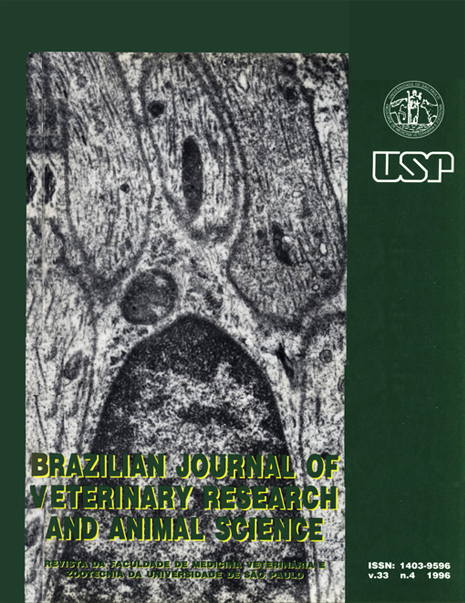Regeneration of peripheral nerve fibres following Haloxon-induced degeneration
DOI:
https://doi.org/10.11606/issn.2318-3659.v33i4p231-234Keywords:
Haloxon, Poisoning, Sheep, Neurotoxins, Nerve regenerationAbstract
Delayed neurotoxicity has been associated with organophosphorus poisoning for years. In order to study such condition in sheep, 11 animals were given either one or two high doses of Haloxon. Exposed sheep were observed daily and between 16 and 25 days after administration neurological signs as incoordination and ataxia were detected in six of them. Biopsies of tibial and laryngeal nerves were performed as soon as neurotoxicity was diagnosed, and after death fragments of selected nerves were collected together with CNS tissues for light and electron microscopy and teased fiber studies. Laryngeal, tibial and sciatic nerves showed the most pronouced changes, consisting chiefly of wallerian degeneration that was seen either as a single fiber or as a complete fascicle feature. Exams performed after death clearly showed regenerating fascicles with axonal sprouts growing within a Schwann cell old basal lamina, and some thinly myelinated axonal sprouts.Downloads
Download data is not yet available.
Downloads
Published
1996-12-01
Issue
Section
ANIMAL PATHOLOGY
License
The journal content is authorized under the Creative Commons BY-NC-SA license (summary of the license: https://
How to Cite
1.
Souza MV de, Graça DL, Ferrão SNN, Contesini EA. Regeneration of peripheral nerve fibres following Haloxon-induced degeneration. Braz. J. Vet. Res. Anim. Sci. [Internet]. 1996 Dec. 1 [cited 2024 Apr. 19];33(4):231-4. Available from: https://www.revistas.usp.br/bjvras/article/view/50206





